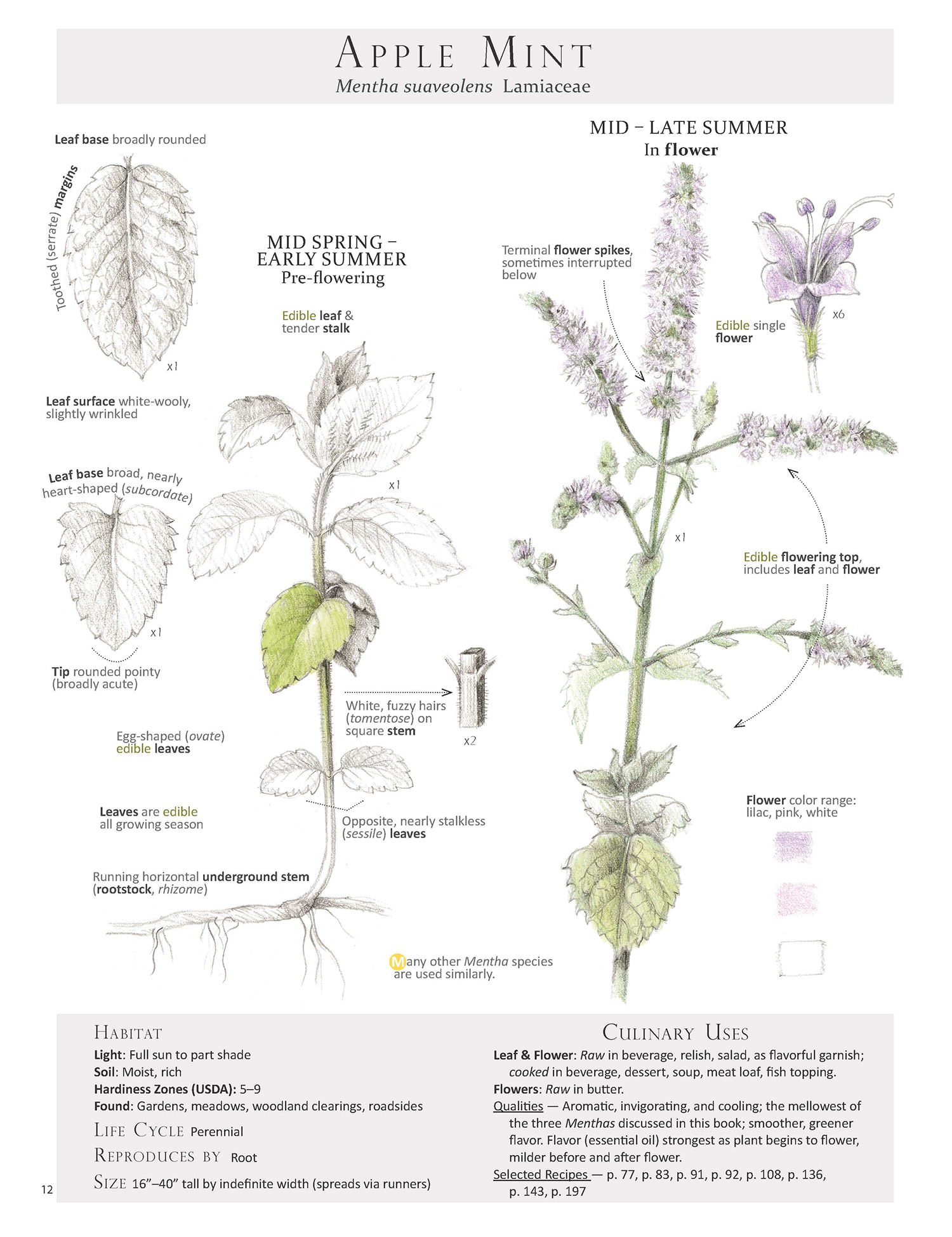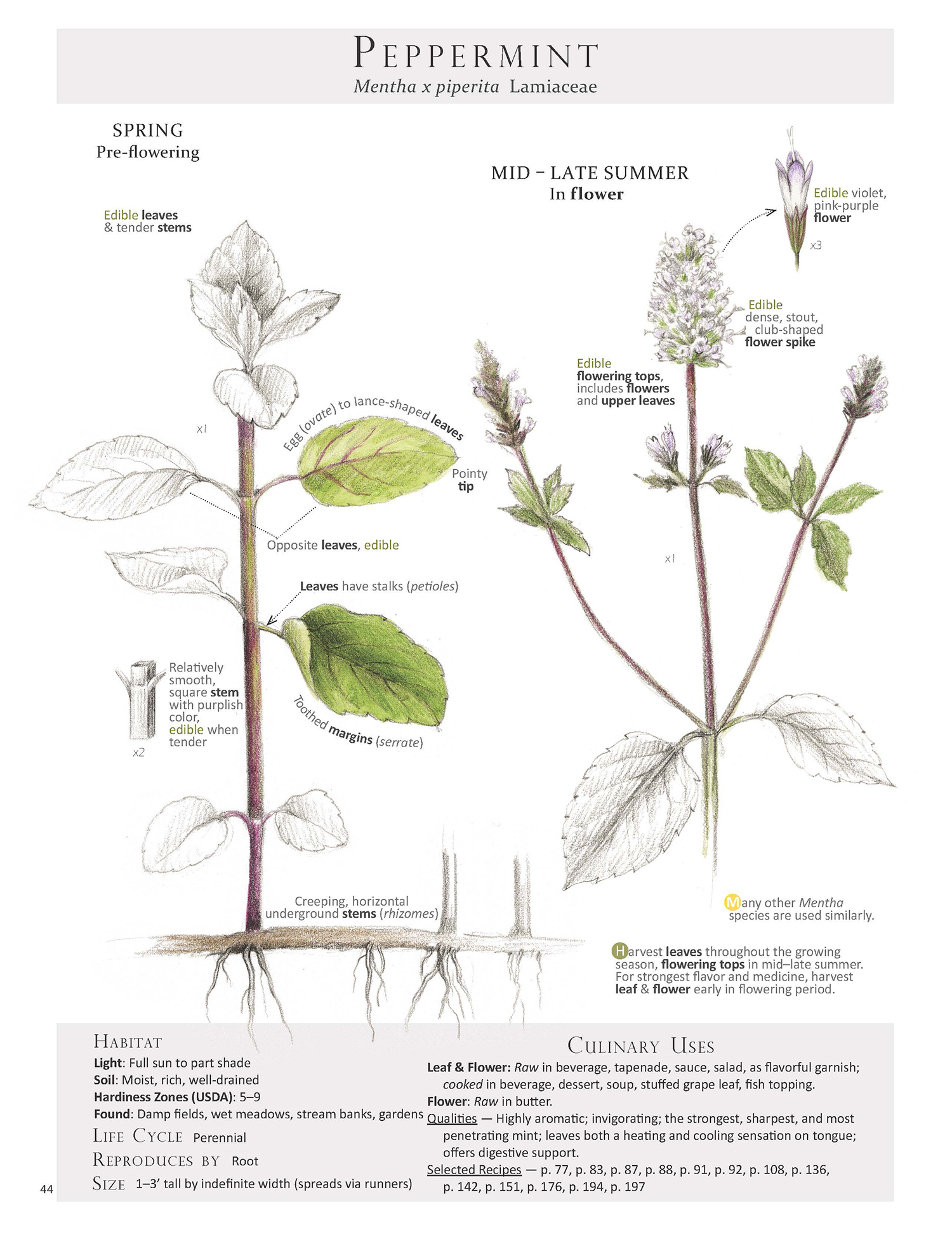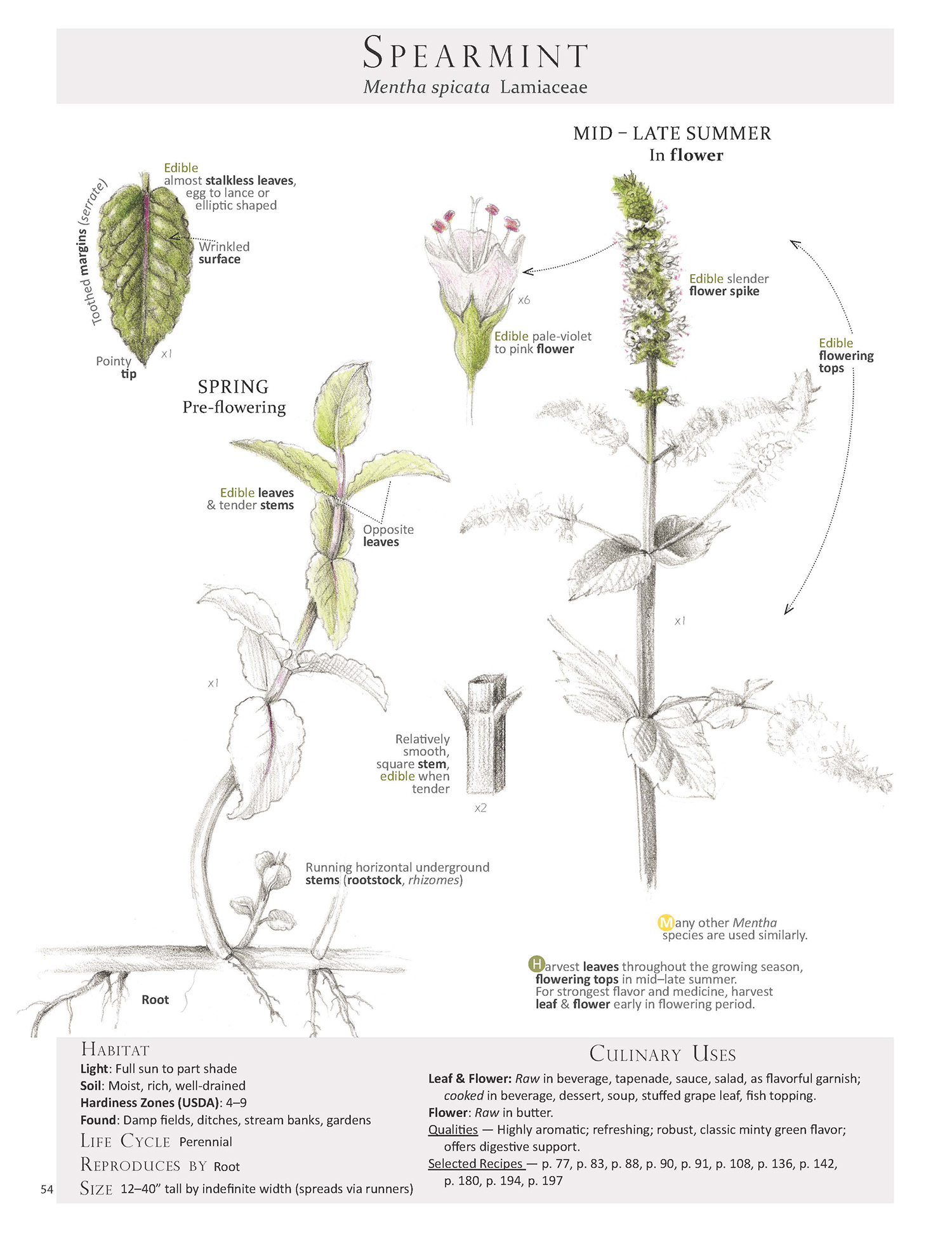LEMON BALM MEDICINE MOMENT Lemon balm (Melissa officinalis), a perennial of the mint family (Lamiaceae) with an aromatic, pleasant, floral, lemon-like flavor that is cooling, calming, uplifting, and mildly astringent. It is used in formulas for bellyaches, anxiety, hyperthyroid, colds and viruses. FYI, if you don't have a wild patch growing nearby, it is quite easy to grow, and very worthwhile.
Read moreMarvelous Mint and What To Do With It!
Here is a perfect craft cocktail that is cooling and refreshing for these late summer, fresh mint-filled days. If you are into Mint Juleps this version really heightens the mint flavor in a satisfying way.
Mint Bourbon–Julep Wild Style
Makes 16 oz, serves 4–6
This lightly sweetened liqueur captures the essence of fresh mint. To achieve good flavor, purée the plants, then steep the mixture for a bit of time. Serve at social gatherings, or pour them into attractive bottles and give them away as gifts. The alcohol content of this drink ranges from 25% when using 80 proof to 31% when using 100 proof.
• 10 oz 80–100 proof bourbon
• 2 large handfuls fresh leaves or flowering tops of apple mint, peppermint, and spearmint (stripped off main stalk). I like this mint combo, but if you only have one kind of mint, by all means use it.
• 4 oz water
• 3–4 tablespoons maple syrup
Purée ingredients in a blender, pour into a glass jar, cover with a tight-fitting lid and leave out for about an hour, or for up to four weeks at room temperature. Strain through a fine-mesh sieve, and squeeze the plant material to remove as much liquid as possible. If you would like to remove all plant particles, line the sieve with a thin linen cloth before straining. Serve over crushed ice and garnish each glass with a fresh mint leaf, if available. To store, pour into a glass bottle, cap tightly and keep in a cool, dark place. This Mint Bourbon keeps for at least a year, and although it won’t rot due to the alcohol content, the aromatic flavors decrease with time.
Recipe excerpt and mint identification pages from our Foraging & Feasting: A Field Guide and Wild Food Cookbook by (me) Dina Falconi; illustrated by Wendy Hollender. Book link: http://bit.ly/1Auh44Q
Fall Bitters: Make your own for the holidays — Promotes Digestion & Liver Health
Bitters speak to these upcoming days of feasting. They help us digest our food, especially when eating large quantities of rich fare. Bitters also tone and support liver function which makes many things work well in our lives (the liver is responsible for over 500 metabolic functions). As a flavor enhancer, drops are often added to mixed drinks. When poured into an attractive glass bottle featuring a homemade label, these make great gifts. Why not create your own? I am excited to share my Therapeutic Spirits Master Recipe and Variations that will empower you to do so. Many of the weedy wild plants that are bitter and/ or aromatic can be used for making this therapeutic elixir. At this time of year the roots are particularly potent and great for making bitters. Think: roots of dandelion, yellow dock, burdock, and sweet cicely. Happy bitter-making!
From the Beverage Chapter of Foraging & Feasting: A Field Guide and Wild Food Cookbook by Dina Falconi; illustrated by Wendy Hollender.
One of the Burdock pages from Foraging & Feasting: A Field Guide and Wild Food Cookbook by Dina Falconi; illustrated by Wendy Hollender.
The best time to dig burdock root is when it is in basal rosette stage, as illustrated above.
A student making bitters (aka digestive tonic) during summer herb class.







